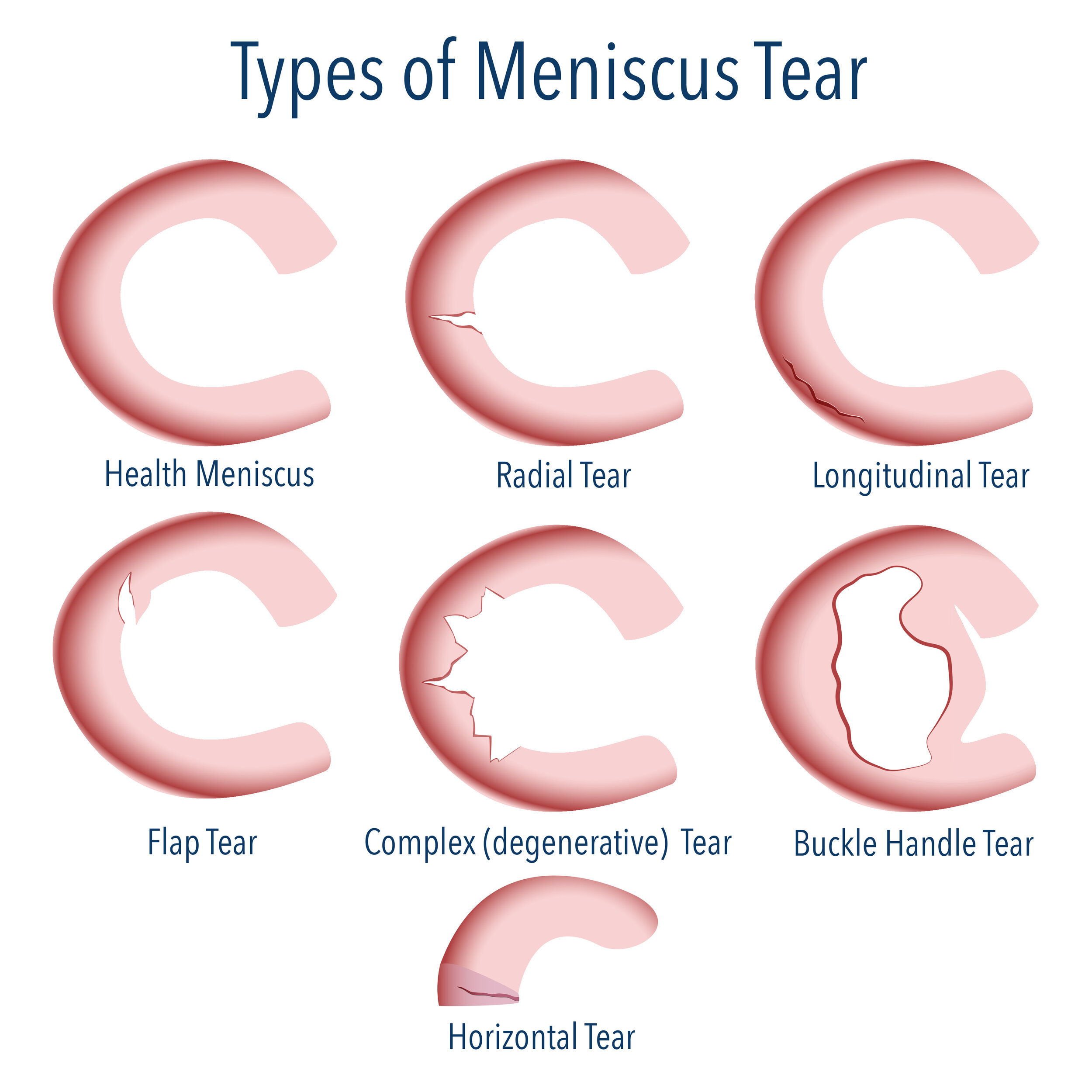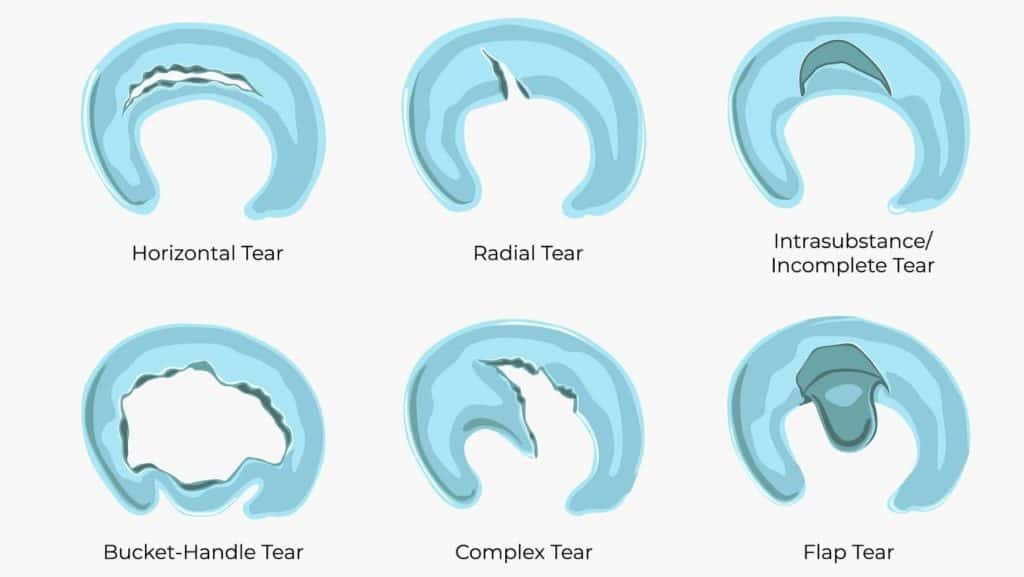Understanding Meniscus Tears

The meniscus is a C-shaped piece of cartilage that acts as a shock absorber in the knee joint. It helps to distribute weight evenly and protect the joint from wear and tear. It also helps to stabilize the knee and allows for smooth movement.
Anatomy and Function of the Meniscus
The meniscus is a crucial part of the knee joint, playing a vital role in its stability and functionality. It acts as a shock absorber, distributing weight evenly across the knee joint, reducing stress on the cartilage and bones. This cushioning effect is essential for maintaining joint health and preventing premature wear and tear. The meniscus also helps to stabilize the knee joint, preventing excessive movement and potential injury. Its unique shape allows for smooth gliding of the femur (thigh bone) on the tibia (shin bone), facilitating a wide range of motion without friction.
Types of Meniscus Tears
Meniscus tears can be classified based on their location and direction.
- Medial Meniscus Tear: This type of tear occurs on the inner side of the knee, affecting the medial meniscus. It’s more common than a lateral tear, primarily due to the medial meniscus being more fixed and less mobile than its lateral counterpart.
- Lateral Meniscus Tear: This tear affects the outer side of the knee, involving the lateral meniscus. It is less frequent than a medial tear because the lateral meniscus is more mobile and less firmly attached to the joint capsule.
- Horizontal Tear: This tear runs across the width of the meniscus, often occurring due to a twisting injury.
- Vertical Tear: This tear runs lengthwise along the meniscus, usually caused by a direct impact or sudden twisting motion.
- Bucket-Handle Tear: This type of tear involves a large flap of the meniscus that is detached and can become trapped within the joint, causing pain and locking of the knee. It’s a severe tear, often requiring surgical intervention.
Causes of Meniscus Tears
Meniscus tears are commonly caused by a combination of factors, including:
- Sports Injuries: These are a frequent cause of meniscus tears, particularly in athletes involved in high-impact sports like football, basketball, and skiing. Sudden twisting or pivoting motions can put excessive stress on the meniscus, leading to a tear.
- Age-Related Degeneration: As we age, the meniscus naturally deteriorates, becoming thinner and weaker. This makes it more susceptible to tearing, even from minor activities.
- Trauma: A direct impact to the knee, such as a fall or a car accident, can cause a meniscus tear. This can range from a minor tear to a severe, complete rupture.
Symptoms and Diagnosis

A meniscus tear is a common knee injury that can occur due to a sudden twisting or forceful impact. It can affect individuals of all ages and can lead to a range of symptoms. Understanding the symptoms and diagnostic methods for a meniscus tear is crucial for timely treatment and optimal recovery.
Symptoms of a Meniscus Tear
The symptoms of a meniscus tear can vary depending on the severity and location of the tear. Some common symptoms include:
- Pain: The most common symptom is pain in the knee, particularly when twisting or rotating the joint. Pain can also occur when squatting, climbing stairs, or getting up from a chair.
- Swelling: Swelling in the knee is another common symptom, which may occur immediately after the injury or develop gradually over time.
- Stiffness: Stiffness in the knee joint can make it difficult to bend or straighten the leg.
- Clicking or popping: Some individuals may experience a clicking or popping sensation in the knee when they move it.
- Locking or catching: The knee may lock or catch, making it difficult to extend or straighten the leg.
- Giving way: The knee may give way or buckle, making it difficult to bear weight or walk.
Diagnosis of a Meniscus Tear
Diagnosing a meniscus tear typically involves a combination of physical examination, imaging tests, and sometimes, arthroscopy.
Physical Examination
A physical examination is the first step in diagnosing a meniscus tear. During the examination, the doctor will:
- Assess your range of motion: The doctor will evaluate how far you can bend and straighten your knee.
- Check for tenderness: The doctor will press on different areas of your knee to check for tenderness.
- Perform special tests: The doctor may perform specific tests, such as the McMurray test or the Apley compression test, to check for signs of a meniscus tear.
Imaging Tests
If the physical examination suggests a meniscus tear, the doctor may order imaging tests to confirm the diagnosis.
- X-ray: An X-ray can rule out other conditions, such as a fracture or arthritis, but it may not always show a meniscus tear. This is because the meniscus is made of cartilage, which does not show up well on an X-ray.
- MRI: An MRI is a more sensitive imaging test that can provide detailed images of the knee joint, including the meniscus. It is the gold standard for diagnosing meniscus tears.
Arthroscopy
Arthroscopy is a minimally invasive surgical procedure that involves inserting a small camera and surgical instruments into the knee joint. This procedure can be used to diagnose and treat meniscus tears. During arthroscopy, the surgeon can directly visualize the meniscus and determine the extent of the tear.
Pain Scale
A pain scale is often used to assess the severity of pain associated with a meniscus tear. A common pain scale is the Visual Analog Scale (VAS), which uses a line of 10 centimeters to represent pain intensity, with 0 being no pain and 10 being the worst imaginable pain. The patient marks the point on the line that corresponds to their pain level.
A pain score of 5 or higher on the VAS scale indicates moderate to severe pain.
Treatment Options: Meniscus Tear

The treatment for a meniscus tear depends on the severity of the tear, the location of the tear, your age, activity level, and overall health. There are two main approaches to treating a meniscus tear: conservative management and surgical intervention.
Conservative Management
Conservative management is often the first line of treatment for meniscus tears. It aims to reduce pain, inflammation, and improve mobility without surgery. This approach typically involves the following:
- RICE (Rest, Ice, Compression, Elevation): This acronym represents the initial steps for treating a meniscus tear. Resting the injured knee, applying ice to reduce swelling, using a compression bandage to minimize inflammation, and elevating the leg above the heart can help reduce pain and inflammation.
- Pain Medication: Over-the-counter pain relievers, such as ibuprofen or naproxen, can help manage pain and inflammation. In some cases, your doctor may prescribe stronger pain medications, such as opioids, for short-term use.
- Physical Therapy: Physical therapy is essential for regaining strength, flexibility, and range of motion in the injured knee. A physical therapist can guide you through exercises designed to strengthen the muscles surrounding the knee, improve stability, and restore proper function.
Surgical Intervention
If conservative management fails to alleviate pain or improve function, surgery may be recommended. The most common surgical procedure for meniscus tears is arthroscopic surgery.
Arthroscopic Surgery
Arthroscopic surgery is a minimally invasive procedure that uses a small camera and specialized instruments inserted through tiny incisions in the knee. This technique allows surgeons to visualize the meniscus tear and perform the necessary repairs or removals.
Types of Arthroscopic Procedures
- Meniscus Repair: This procedure involves stitching the torn meniscus back together. It is typically performed for tears that are located in the outer portion of the meniscus, which has a better blood supply.
- Partial Meniscectomy: This procedure involves removing the torn portion of the meniscus. It is often performed for tears in the inner portion of the meniscus, which has a poor blood supply and is less likely to heal.
Surgical Techniques
| Surgical Technique | Description | Suitability |
|---|---|---|
| Meniscus Repair | Stitching the torn meniscus back together. | Suitable for tears in the outer portion of the meniscus, which has a better blood supply. |
| Partial Meniscectomy | Removing the torn portion of the meniscus. | Suitable for tears in the inner portion of the meniscus, which has a poor blood supply and is less likely to heal. |
| Meniscus Transplant | Replacing the damaged meniscus with a donor meniscus. | Suitable for patients with extensive meniscus damage or who have had multiple meniscus surgeries. |
Pros and Cons of Treatment Options, Meniscus tear
- Conservative Management:
- Pros: Non-invasive, less risky than surgery, and can be effective for some meniscus tears.
- Cons: May not be effective for all tears, can take longer to recover, and may not completely eliminate pain or instability.
- Surgical Intervention:
- Pros: Can effectively address severe meniscus tears, can improve pain, function, and stability.
- Cons: Invasive procedure, risks associated with anesthesia and surgery, potential complications, and recovery can take longer.
A meniscus tear, a common knee injury, can significantly impact athletic performance. The impact of such an injury can be seen in the realm of professional sports, such as the minnesota vikings , where players need to maintain peak physical condition.
Understanding the causes, symptoms, and treatment options for meniscus tears is crucial for athletes at all levels, ensuring their safe and effective return to the field.
A meniscus tear, a common knee injury, occurs when the C-shaped cartilage in the knee joint is torn. This injury can be caused by a sudden twisting or impact, and often leads to pain, swelling, and difficulty moving the knee.
Recovery from a torn meniscus can be a lengthy process, with treatment options ranging from conservative approaches like rest and physical therapy to surgical intervention. Understanding the specific details of your injury and available treatment options is crucial for achieving optimal recovery.
For more information on navigating the path to recovery from a torn meniscus, visit this resource: torn meniscus recovery. While the recovery journey can be challenging, it is essential to follow your healthcare provider’s guidance to regain knee function and minimize the risk of future injuries.
